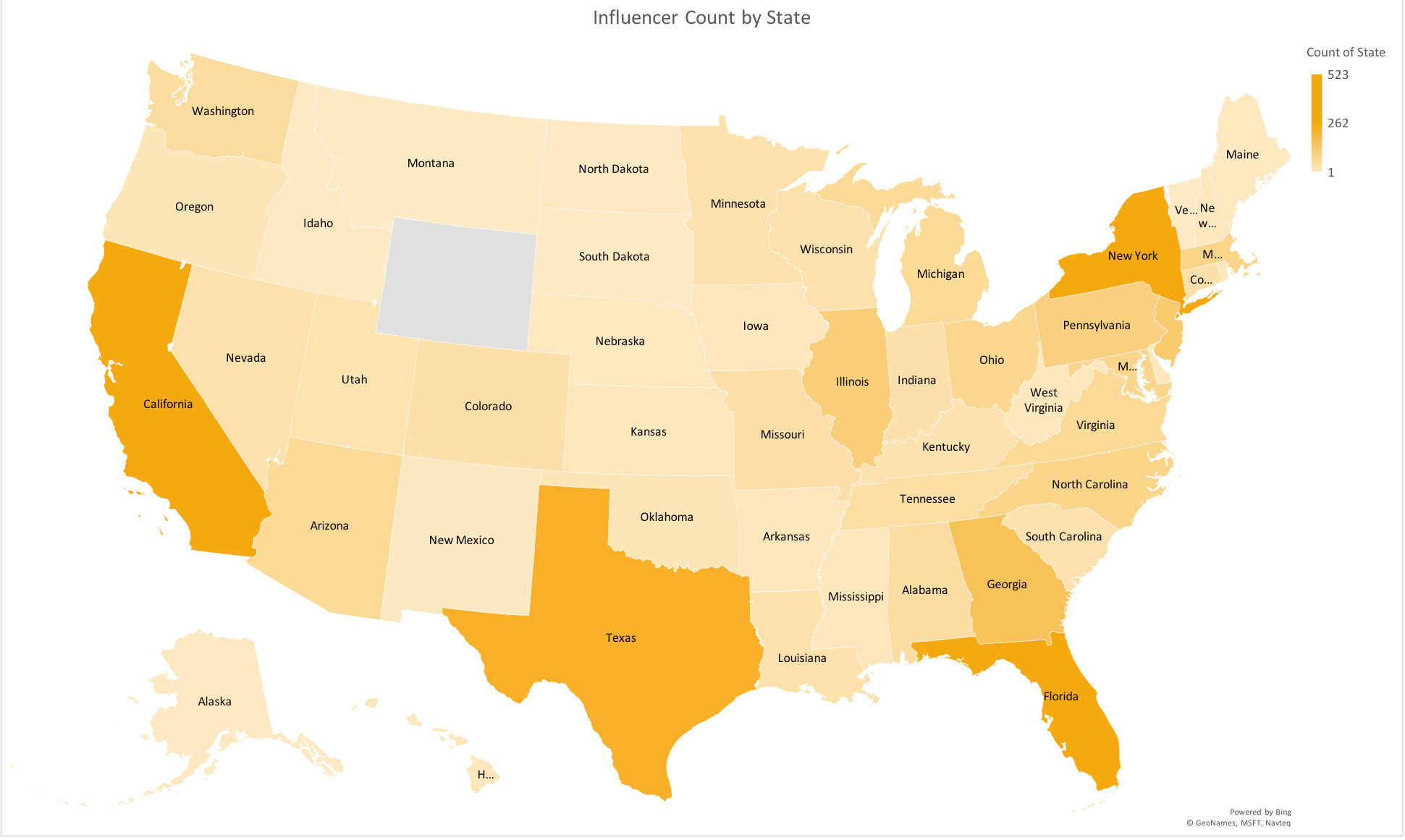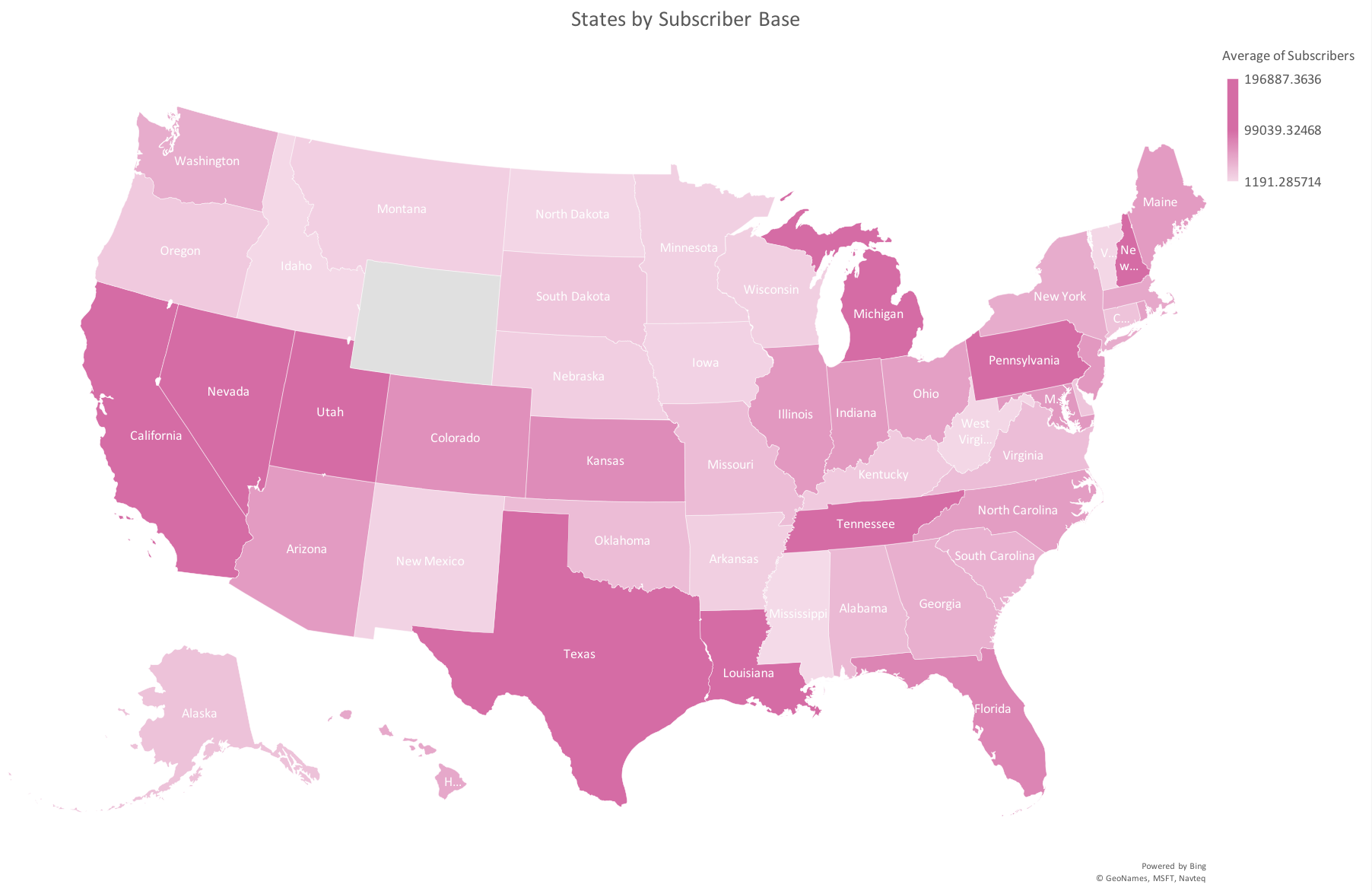These days, most if not all purchase decisions you make are partly influenced by your friends. (Admit it: who doesn’t want to be left behind on trends?) Most of those friends probably found out about that cool watch they’re wearing on Instagram or Youtube. Even if you’re offline, Influencer Marketing is in fact everywhere.
No matter if it’s lifestyle, fitness, fashion, beauty, gaming, or tech: creators are always looking to collaborate with brands to connect their fans with products and opportunities their fans will love. Likewise, as AdBlock usage increases, the best brands need a way to easily create unique content that will engage their target customers in an authentic manner.
A persistent myth, however, is that aspiring creators should move to urban areas like Los Angeles if they want to be influential.
For brands, marketers that want to leverage Influencer Marketing for exposure are tempted to focus only on creators in dense districts.
And that may be true! Many influencers do indeed live in dense urban locations:

Density of Grapevine influencers on YouTube by state
But does location equal influence? Certainly not! Through looking at data from influencers in our own network, it’s tempting to confirm that metropolitan areas are where influencers thrive. Top states for influencers to call home are: California, Texas, Florida, and New York.
Who’s to say that aspiring creators need to move to the big city to build a following? If Twitch Streamer, Ninja, can build a following from rural Illinois, why can’t other creators?
Density of states by subscriber base
When looking at data from our influencers by the average amount of subscribers on YouTube, it’s plain to see that location doesn’t necessarily influence your destiny. According to the Brookings Institute, more millennials are moving to the south and to the west. Cities like San Antonio, Denver, Provo-Orem, and even Baton Rouge are popular destinations for millenials who could easily become influencers.
Let’s face the facts: 85% of millennials own smartphones that they check more than 157 times a day. On top of that, many of those millennials consider apps like Amazon and YouTube as things they “can’t live without.” Today’s consumers are always shopping, always scrolling, and always posting.
What does this mean for brands?
- Don’t limit your influencer search to the big cities!
What’s great about how spread out effective influencers are is that it’s easier than ever to reach the audiences you need. Marketers can use tools like our own Grapevine Influencer Marketing Platform to segment influencers by the regions they reach.
- Diverse influencers means broader appeal
No need to worry about complaints that your brand or products only appeal to the “coastal elites.”
Creators, like Love Meg from North Carolina, often imbue their hometown charm into their content. This makes them more accessible, trustworthy, and authentic.
Because they’ve built strong personalities based on authenticity and trust within their fan community, you can be assured that diversifying your pool of influencers will help your brand go far.
What does this mean for creators?
- Don’t worry about displacing yourself to “make it big”
Starry eyed creators shouldn’t worry about having to move to Los Angeles and try to make a name for themselves in an already crowded community. You don’t need an apartment in an expensive New York neighborhood to pursue an awesome collaboration with a brand and make a great video on YouTube
- Create your own communities!
Who says Los Angeles or New York City are the only places where you can meet fellow influencers? Established influencers in less dense locations can build their own communities to rival the likes of Team 10 by mentoring micro-influencers in their area.
On the flip-side, micro-influencers can take advantage of offering their services to smaller, more local brands and startups to increase their social profile.
Marketers and creators alike can say goodbye to the phrase “location, location, location,” because Influencer Marketing is accessible to anyone, anywhere. From Nevada to Pennsylvania, to Tennessee, there’s no shortage of content being created. It’s a veritable United States of Influencer.
Read more: West Texas Investors Club: Quick Step Anchor Earns $50,000 Deal
